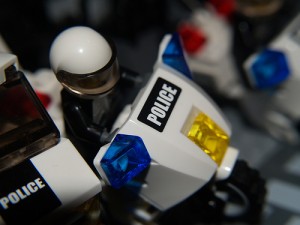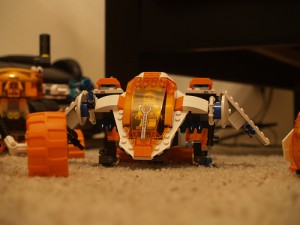All children love LEGO, and I was no exception. I remember the first LEGO we ever got was secondhand, in a big pink bucket, and it was predominantly yellow pieces. I didn’t think too much about that at the time, but now I wonder if what we were really getting were pieces that no one wanted. I picked up LEGO sets as I could growing up, and my favorite themes were Space Police II and Blacktron II. Space has always been my favorite overall LEGO category.
After college I went to work at eBay, and that was dangerous. I had money, and I was on the site all day, and my LEGO collection grew drastically. It outpaced my ability to keep it organized, and store it. In bulk, I have over 200 pounds of the stuff now, down in the basement. Simultaneously, my desire to build bigger and more detailed creations meant devoting bigger and bigger spaces to each project. I reached a point where I didn’t want to spend twenty hours organizing, and without taking that time, my LEGO collection was unusable.
And then along came LEGO Factory (since rebranded DesignByMe) and LEGO Digital Designer. (See Footnote)
LEGO Digital Designer is a program for Mac and PC that allows you to build a model digitally from a large (but limited) series of parts. It’s a little bit of a performance hog, so I wouldn’t fire it up if you’re on a four year old laptop, but if your machine is recent, you can build ships of pretty astonishing sizes. (Don’t like ships? Build castles, or townhomes, or whatever appeals to you. I build spaceships.) You can upload and purchase physical versions of your models, print instructions, even take screenshots. It has become my major hobby.
Exempli Fucking Gratia:
(A link to flickr, since the embed slows the page load to a crawl)
Footnote
Yeah, guys, I know that digital LEGO building precedes LDD by quite a while. My first experiments with it used MLCad and LDraw and POVRay, and there are many purists out there who consider this the only way to go, but I can’t get into it. Here’s why:
In LDD, pieces know how they’re supposed to stick together. In MLCad you get a nice grid, and you can change the grid size, and even position pieces numerically, but getting two pieces together in a sensible way is the world’s biggest pain in the ass. I spend all my time fighting the system, whereas LDD, which admittedly has a very limited palette and doesn’t know all of the ways that pieces can connect in the physical world, is very very quick to attach pieces the normal way, most of the time. In the time it would take to attach pieces in the usual plate to plate alignment in MLCad, I can work around LDD’s limitations to figure out a SNOT technique. Honestly, I don’t think I’ve ever gotten past the tutorial in LDraw, but I can build 600 stud spaceships in LDD.
Also in LDD, you can import sub-assemblies and attach them to your module, which means you can build in a modular way and then do a final assembly. I’ve been doing this ever since I got my hands on the old Space Police II Galactic Mediator, and it’s nice to be able to build digitally how I build physically.
Now, if the problem is that I use MLCad instead of some better program, please, please let me know.


